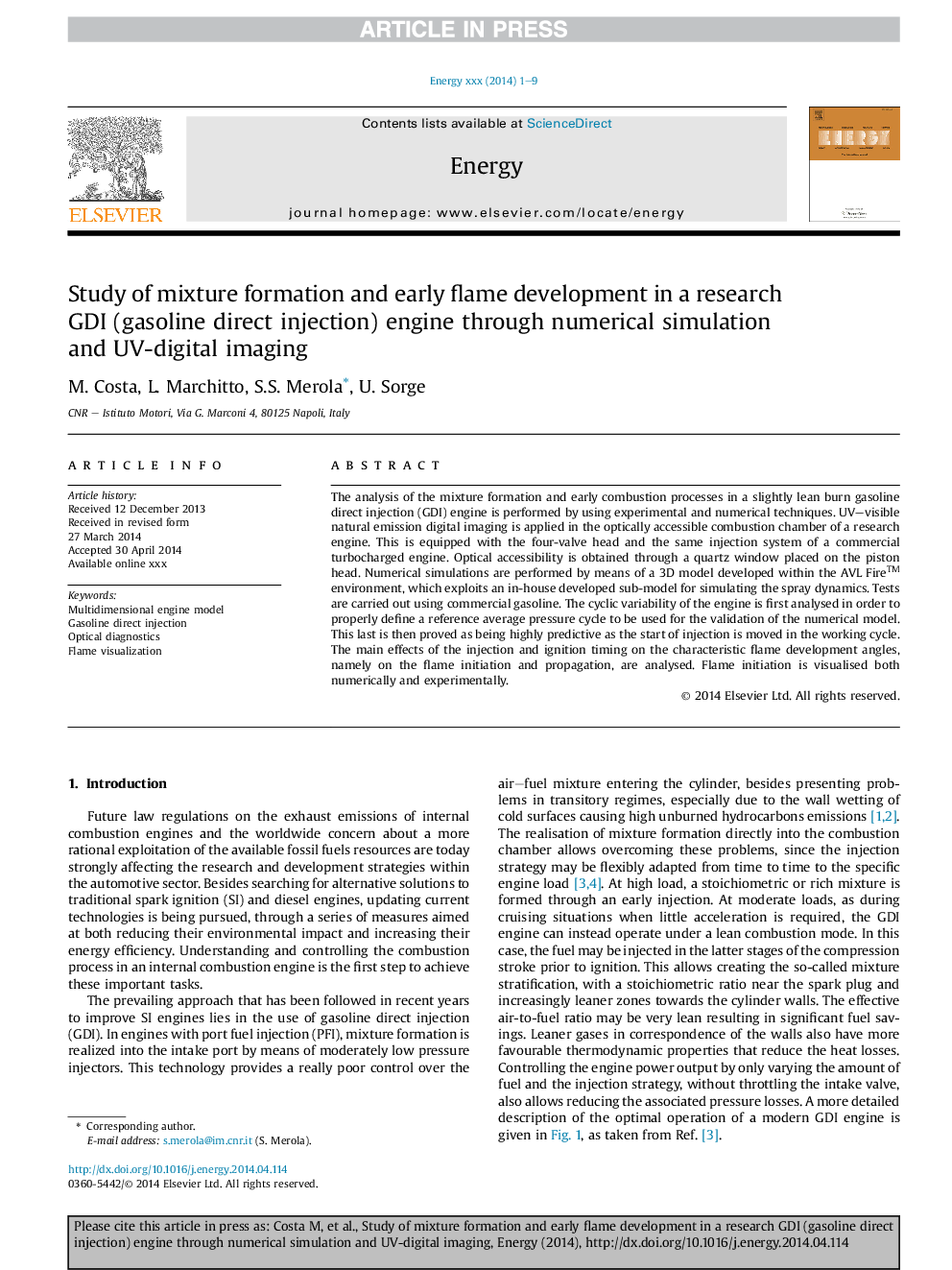| Article ID | Journal | Published Year | Pages | File Type |
|---|---|---|---|---|
| 8076295 | Energy | 2014 | 9 Pages |
Abstract
The analysis of the mixture formation and early combustion processes in a slightly lean burn gasoline direct injection (GDI) engine is performed by using experimental and numerical techniques. UV-visible natural emission digital imaging is applied in the optically accessible combustion chamber of a research engine. This is equipped with the four-valve head and the same injection system of a commercial turbocharged engine. Optical accessibility is obtained through a quartz window placed on the piston head. Numerical simulations are performed by means of a 3D model developed within the AVL FireTM environment, which exploits an in-house developed sub-model for simulating the spray dynamics. Tests are carried out using commercial gasoline. The cyclic variability of the engine is first analysed in order to properly define a reference average pressure cycle to be used for the validation of the numerical model. This last is then proved as being highly predictive as the start of injection is moved in the working cycle. The main effects of the injection and ignition timing on the characteristic flame development angles, namely on the flame initiation and propagation, are analysed. Flame initiation is visualised both numerically and experimentally.
Related Topics
Physical Sciences and Engineering
Energy
Energy (General)
Authors
M. Costa, L. Marchitto, S.S. Merola, U. Sorge,
